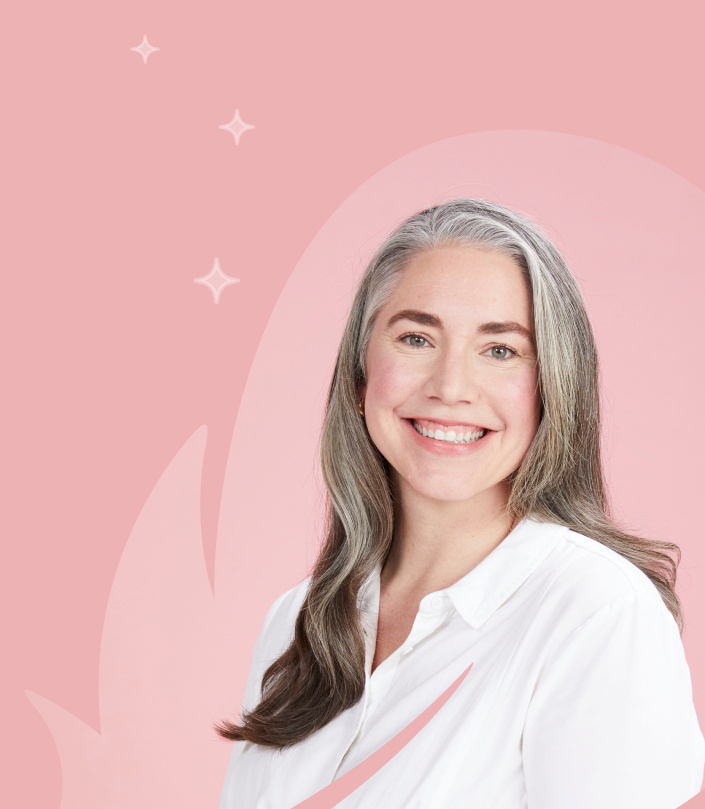Pregnancy over 35, also known as advanced maternal age, is increasingly common. Find out everything you need to know about having a baby in your mid-to-late 30s and beyond.
-
Tracking cycle
-
Getting pregnant
-
Pregnancy
-
Help Center
-
Flo for Partners
-
Anonymous Mode
-
Flo app reviews
-
Flo Premium New
-
Secret Chats New
-
Symptom Checker New
-
Your cycle
-
Health 360°
-
Getting pregnant
-
Pregnancy
-
Being a mom
-
LGBTQ+
-
Quizzes
-
Ovulation calculator
-
hCG calculator
-
Pregnancy test calculator
-
Menstrual cycle calculator
-
Period calculator
-
Implantation calculator
-
Pregnancy weeks to months calculator
-
Pregnancy due date calculator
-
IVF and FET due date calculator
-
Due date calculator by ultrasound
-
Medical Affairs
-
Science & Research
-
Pass It On Project New
-
Privacy Portal
-
Press Center
-
Flo Accuracy
-
Careers
-
Contact Us
“Geriatric pregnancy”: Pregnancy at 35 years or older


Every piece of content at Flo Health adheres to the highest editorial standards for language, style, and medical accuracy. To learn what we do to deliver the best health and lifestyle insights to you, check out our content review principles.
If you’re over 35 and pregnant (or hoping to be), you might have come across the term “geriatric pregnancy.” If it makes you uncomfortable, you’re not the only one. It may be a medical term, but given that “geriatric” literally means “elderly,” the term doesn’t seem to fit those of us in our 30s or 40s.
While you might still hear the phrase occasionally, you may be glad to hear that “geriatric pregnancy” is on its way out. “This is an outdated term that was previously used to describe pregnancy in individuals who are age 35 or older,” says Dr. Jenna Beckham, obstetrician, gynecologist, and complex family planning specialist, WakeMed Health and Hospitals and Planned Parenthood South Atlantic, North Carolina, US. Experts have stopped calling older moms geriatric with good reason. “[It] can have negative connotations and be viewed as a derogatory term,” she adds.
This change in phrasing also reflects a major shift in the way we live. Doctors started referring to older parents as “geriatric” in the 1970s when the average age of first-time moms in the United States was 21.4 years old. These days, more people are getting pregnant and delivering healthy babies well into their 30s and 40s. In fact, 20% of women in the United States now have their first child after 35.
However, there are still plenty of misconceptions around getting pregnant at 35 or older. We unpack the useful information behind this unhelpful phrase and share advice on what to expect from a pregnancy in your later 30s and beyond.
Key takeaways: “Geriatric” pregnancy
- More babies than ever before are being born to older moms. The number of women giving birth over the age of 35 has risen by 900% over the past five decades. At the same time, women aged 20 to 24 in the United States are having 43% fewer babies than they did 30 years ago.
- It’s important to remember that everyone’s fertility is different, so don’t be put off trying if you’re 35 or older. Just be mindful of the advice around seeing your doctor for a checkup. If you’re over the age of 35, go see them after six months of trying for a baby. If you’re over 40, the advice is to schedule an appointment right away.
- A healthy pregnancy and delivery in your late 30s and 40s is still possible. However, it may take longer to get pregnant, and you may be monitored a little more closely because pregnancy and birth can come with some higher risks as you get older.
- If you’re trying to conceive, an app like Flo allows you to track your cycles and symptoms, helping you to decode your body’s fertility signals. You can also use the Flo app to track your pregnancy so you know what to expect and how your baby is developing each week.
What is advanced maternal age?
Now that “geriatric pregnancy” is used less commonly, experts prefer to use the term advanced maternal age (AMA) to describe pregnancy from your mid-30s onward. “Generally, advanced maternal age is a term used instead of geriatric pregnancy to describe pregnancies in individuals who are 35 years or older,” says Dr. Beckham.
You might be wondering why 35 was chosen as the threshold for reaching advanced maternal age. Because in most other respects, we’re still considered young, fit, and healthy then, right? “The age of 35 was selected based on evidence of declining fertility and increasing genetic abnormalities at this age,” explains Dr. Beckham. That might sound a bit alarming, but keep reading to understand what it means in practice.
It seems this specific definition of AMA is actually open to debate. Current guidelines suggest that pregnancy risks should be put into five-year age groups, rather than having everyone over the age of 35 put into one bracket. For example, people aged 35 to 39 years would be grouped for a certain level of risk, as would those aged 40 to 44 years, and so on, making the possible risks a little more accurate for each age group.
Understanding AMA
So why do AMA pregnancies need to be differentiated from any other pregnancy? In reality, it’s unlikely that you’ll be treated much differently by your medical team. But experts use this term because pregnancy comes with some potential risks for older moms, so your doctor may need to keep a closer eye on you.
The higher risk level is partly because our chance of having health problems increases as we get older. But it’s also due to the quality of our eggs. We’re born with all of the eggs we’ll ever have, which means they age along with the rest of our body. The older we get, the more chance there is that our remaining eggs could have genetic issues.
If you want to have a baby and you’re approaching (or have passed) the age of 35, try not to feel too concerned about it. None of this means that your chance of pregnancy complications spikes overnight. “These risks increase on a continuum,” says Dr. Beckham, meaning it happens gradually. It’s also important to be realistic about the fact that fertility does drop more quickly from age 37 onward. You can read more about your chance of pregnancy by age in this Flo article.
If the idea of being pregnant at an advanced maternal age worries you, try to remember that it simply means you might need more monitoring. You’ll probably be invited for more frequent health visits (for things like extra ultrasounds, genetic screening, and more) to help keep you and your baby safe.
“Although risks of genetic abnormalities and other health conditions, like diabetes and hypertension, increase with increasing age, it is possible to have a healthy pregnancy and birth in patients who are AMA,” says Dr. Beckham.
Remember: Having an increased risk does not mean it’s guaranteed to happen. Most people have healthy, uncomplicated pregnancies. If you have any worries about your pregnancy journey, make sure you share them with your health care team.
Are there any potential health risks for the mother and baby?
All pregnancies carry some degree of risk, regardless of your age. But AMA moms may find that it takes longer to get pregnant and may have a slightly higher risk of pregnancy complications.
Health risks for the mother
Pregnancy complications are medical conditions that can affect you or your baby during pregnancy. As Dr. Beckham puts it, “The two most common medical issues complicating pregnancy are hypertension [high blood pressure] and diabetes [high blood sugar].” Both of these can be issues whether you’ve had them before pregnancy or you develop them for the first time during your pregnancy.

Let’s explain more about hypertension and diabetes, as well as some of the other risks that can become more likely in pregnancy from your mid-30s onward:
- Hypertension: As you get older, your risk of high blood pressure goes up. In pregnancy, this can lead to serious complications like preeclampsia (more on that below), preterm birth, low birth weight, and stillbirth. The good thing is that every pregnant woman gets regular blood pressure checks throughout pregnancy. So if you do have any signs of hypertension, they’ll likely be acted on quickly with medication.
- Gestational diabetes: This type of diabetes develops during pregnancy when blood sugar levels get too high. While anyone can develop gestational diabetes, being older than 35 can raise your risk a little. Luckily, it’s manageable with the right care and monitoring, and most people are offered tests during pregnancy to pick it up. If you’re wondering if you’ll be invited for a test, chat with your doctor.
- Preeclampsia: This is a serious blood pressure condition that can arise after the 20th week of pregnancy. The exact cause is still a bit of a mystery, but being over 35 can make it slightly more likely. However, with proper care, preeclampsia is something that can be managed.
- Miscarriage: A miscarriage is when a pregnancy ends before 23 weeks. About 15% of pregnancies end in miscarriage, and many of these happen in the early weeks. Your risk of miscarriage does increase with age, however with every week of pregnancy that passes, the chance of it happening gets lower. By the age of 40, the chance of a miscarriage is somewhere between 33% and 40%, because the quality of your eggs declines. That said, many women over 40 go on to have healthy pregnancies, so (as hard as it may be) try not to focus on this too much. And remember that, regardless of your age, as those early weeks of pregnancy pass, your chance of miscarriage becomes less and less.
- Cesarean section (C-section): Women over 35 are more likely to need a C-section. But that’s mostly because (according to the stats) older moms are more likely to face health conditions or complications during labor that mean it can be the safest option. Remember that birth choices are up to you, so if you have any strong feelings against having a C-section, then chat about them with your doctor and make notes (a birth plan) to give to your delivery team. While a C-section is a major procedure, it’s generally a safe one, and it’s there when needed to protect both you and your baby.
Health risks for the baby
In the same way you might experience complications during an advanced maternal age pregnancy, your baby may face some risks, too. That said, it’s important to reiterate that thousands of perfectly healthy babies are born to moms in their 30s and 40s every year. So these aren’t certainties.
Take a quiz
Find out what you can do with our Health Assistant
- Growth problems: “Because of increased risk of increased fetal growth or fetal growth restriction [your baby either growing too fast or too slowly], a 3rd-trimester growth ultrasound is recommended,” says Dr. Beckham. Some people find it quite reassuring to see their baby via a scan, so having an extra one may not be a bad thing.
- Genetic conditions: Age is a factor when it comes to certain genetic conditions, like Down syndrome, since chromosomal problems in eggs can be more common as you get older. There’s around a 1% chance of having a baby with trisomy 21 (the medical name for Down syndrome) if you give birth at age 40. But none of this is in your control, and if you’re AMA, you’ll be offered screening to check the likelihood of your baby having any genetic issues.
- Premature birth: Babies born before 37 weeks are considered preterm. And while being over 35 can increase your chances of delivering early, the plus side is that neonatal care has come a long way, so preterm babies often have a good chance of growing healthily outside of your uterus.
- Stillbirth: While the risk of stillbirth does go up with age, it’s still rare. This is part of the reason your doctor may recommend keeping a closer eye on your pregnancy if you’re over 35, just as a precaution.
While complications for you and/or your baby can be more common after 35, it doesn’t mean any of these things will happen. You’ll be monitored carefully, and your medical team will suggest options if anything crops up. But it’s perfectly normal to have worries about a pregnancy (whatever your age), so make sure to ask questions and seek the reassurance you need at any time.
How common is pregnancy after 35?
We know that more people are having babies later, but we’re also constantly reminded of our “biological clocks” ticking away. So how likely is it that you’ll get pregnant after 35?
Fertility and age are closely connected, but the situation isn’t as clear cut as it’s often made out to be. Your fertility starts to decline in your mid-30s, but it’s a gradual process that doesn’t happen overnight. Let’s look at the science behind it.
Starting at puberty, you generally release one egg each month (ovulation). This is a normal part of your menstrual cycle that enables you to get pregnant. But you don’t have an infinite supply of eggs. In fact, you’re born with all the eggs you’ll ever have, and they age right along with you.
Over the years, your egg reserve (that’s the number of eggs you have left) gets smaller. As well as this, the number of these eggs that are good-enough quality to become a healthy baby drops. That’s why conceiving can get harder or take longer. On average, your fertility starts to decline slowly at 32. By the age of 37, it happens more quickly. But you still have a chance of getting pregnant as long as you’re ovulating and have some viable eggs left.
By your 40s, it can be harder to get pregnant in your fertile window. Your periods might become less regular as your ovaries gradually stop releasing eggs during perimenopause, before eventually stopping altogether. That happens when you hit menopause (which is your last ever period), usually between the ages of 45 and 55.
For this reason, by the time you hit 45, getting pregnant is unlikely. But if you want to have a baby around this age, you could explore fertility treatments using frozen or donor eggs.

If you’re trying to conceive, using an app like Flo can be useful. Tracking your periods and cycle symptoms can help you figure out where you are in your cycle, including spotting your body’s signs of ovulation. If you’re concerned about getting pregnant, it’s important to chat with your doctor. If you’re over the age of 35, get an appointment after six months of trying for a baby. If you’re over 40, the advice is to go right away. Remember, age doesn’t automatically rule out pregnancy. It just means that it may take longer or you may need to explore fertility treatment options.
Experiencing “geriatric pregnancy”: What it’s like to have a baby at an advanced maternal age
If you struggle with the outdated terminology, you’re not the only one. “Normalize pregnancy after 35!” says a Flo member in the app’s Secret Chats space, where members share stories and experiences to support each other. “Life is stressful enough without telling a woman who’s trying to conceive or carrying her first baby that she’s considered geriatric or advanced years,” they continue.
Another person in Secret Chats agrees: “I’m 36 years old, first baby, 35 weeks pregnant and have sailed through pregnancy so far. Not every geriatric mother over 35 is the same and will have the same troubles. We are all unique, and our babies are all unique.”
If you’re pregnant or trying to conceive, and you’re worried your age might make things difficult, chatting with like-minded people in the same situation may help you feel less alone. You can do exactly that in Flo’s safe community space, Secret Chats. Download the app to get involved in these conversations and keep a note of your symptoms, cycles, and more.
Is genetic testing recommended for pregnancies over 35?
Whatever your age or health background, you will be offered a set of routine tests during pregnancy that look for possible abnormalities or genetic issues (like having extra or too few chromosomes, for example) in your baby. This is called prenatal testing, and it’s up to you whether you choose to have it or not.
Being of advanced maternal age may be one reason you decide to have this prenatal testing, as it’s a known risk factor. But the majority of babies born to parents in their later 30s and beyond won’t have any of these health issues.
There are different types of prenatal tests for genetic conditions:
- Prenatal genetic carrier screening: This test can be done before you even get pregnant and can tell you if you or your partner carry any genetic conditions (for example, cystic fibrosis or sickle cell anemia) that might be passed down to a future child.
- Prenatal screening tests: These tests can tell you the chances that your fetus has an aneuploidy (an unusual number of chromosomes in a cell). This can cause conditions such as Down syndrome, Edwards’ syndrome or Patau syndrome.
- Prenatal diagnostic tests: These tests can tell you whether your fetus actually has any of these conditions. They are done either through amniocentesis (which involves using a needle to take some amniotic fluid from inside your uterus for testing) or chorionic villus sampling (CVS, (taking a sample of cells from the placenta for testing).
Promoting a healthy pregnancy at 35 or older
The best way to prepare your mind and body and boost your chance of having a healthy pregnancy is pretty much the same at any age. Try to balance a little self-care, a lot of good habits, and staying on top of your health. It will look slightly different for everyone, but here are some key things to help you prepare for a healthy pregnancy:
- Prioritize your health: Taking care of your health is important at any age. But making healthy lifestyle choices can also do a lot to improve your chance of conception, and it’s important to maintain while you’re pregnant, too. “Since some of the complications are related to higher rates of conditions like diabetes and hypertension, efforts to avoid these conditions like maintaining a healthy weight, eating a healthy diet, and engaging in regular exercise can be helpful,” says Dr. Beckham. Try walking, swimming, or yoga to stay healthy and keep stress in check. Remember that a healthy weight is different for everyone, so chat with your doctor if you’re not sure what you should be aiming for.
- Pre-conception care: If you’re hoping to get pregnant, schedule an appointment with your doctor. Pre-conception care gives you a chance to discuss any underlying health conditions (like diabetes, high blood pressure, or thyroid issues) that could affect your pregnancy. “A pre-conception visit is always a good idea, but especially in [people] of advanced age who are planning pregnancy,” says Dr. Beckham. Remember that if you’re 35 or older and you’ve been trying to conceive for six months without it happening, you may be referred to a fertility expert. Investigations (for both of you) can take a while, so it’s wise to make the most of your time.
- Take your prenatal vitamins: All expectant moms are advised to take folic acid during the first 12 weeks of pregnancy to help the baby’s brain and spine develop normally. And you can start taking folic acid before conception in order to prepare your body for pregnancy. It’s recommended that you take at least 400 mcg of folic acid every day in the weeks before you conceive and during your 1st trimester. It can help to prevent defects in the neural tube as your baby grows and develops. This is a tube formed in early pregnancy that goes on to help build your baby’s brain, skull, spinal cord, and back bones. Keeping your iron, calcium, vitamin D, choline, omega-3 fatty acids, B vitamins, and vitamin C stores topped up is also important, so follow a balanced diet and take any prenatal vitamins recommended by your doctor.
- Get your nutrition right: Whether you’re trying to conceive or you’re already pregnant, it’s a great idea to aim for a balanced diet. You want your plate to be rich in protein, iron, calcium, and folic acid, so try to eat lots of fruits, nuts, veggies, leafy greens, whole grains, and low-fat dairy products to give your body the nutrients it needs.
Frequently asked questions about geriatric pregnancies
What is a geriatric pregnancy?
A “geriatric pregnancy” is an outdated term previously used by medical professionals to describe a pregnancy in someone over the age of 35. Nowadays, doctors prefer to use the term advanced maternal age instead.
What is the age range for a geriatric pregnancy?
Technically, the benchmark for geriatric pregnancy is if you’re 35 or older on your due date. But experts are reconsidering whether this is accurate. And while your age is closely linked to your fertility and chances of conception, there are several other factors that influence a healthy pregnancy, including your health, family history, lifestyle, and how close you are to menopause.
Is 30 a geriatric pregnancy?
No, pregnancy at age 30 is not considered to be “geriatric.” While fertility starts to gradually decline in your 30s, many women in this age range have healthy pregnancies. If you have any concerns, reach out to your doctor for more personalized advice.
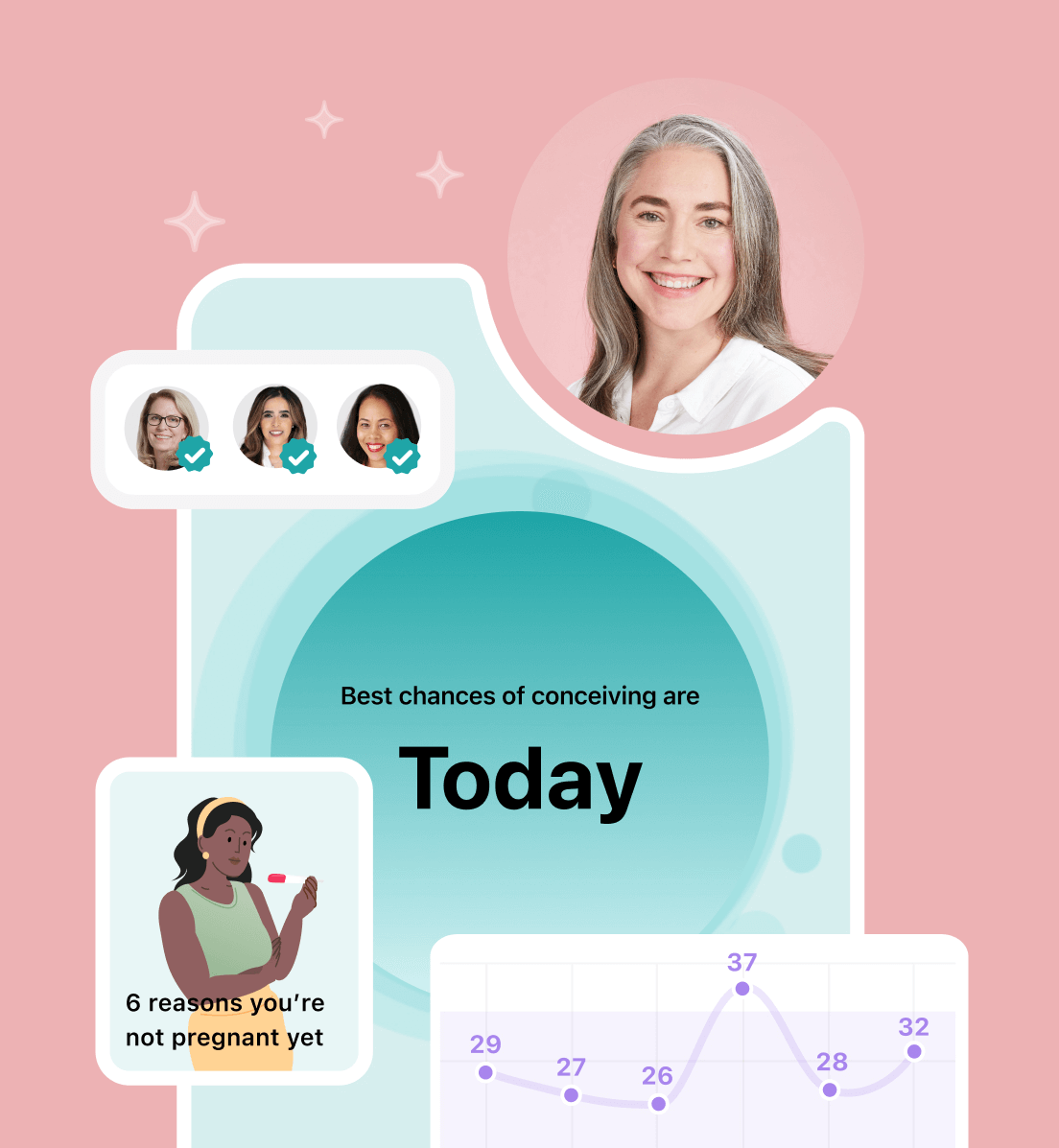
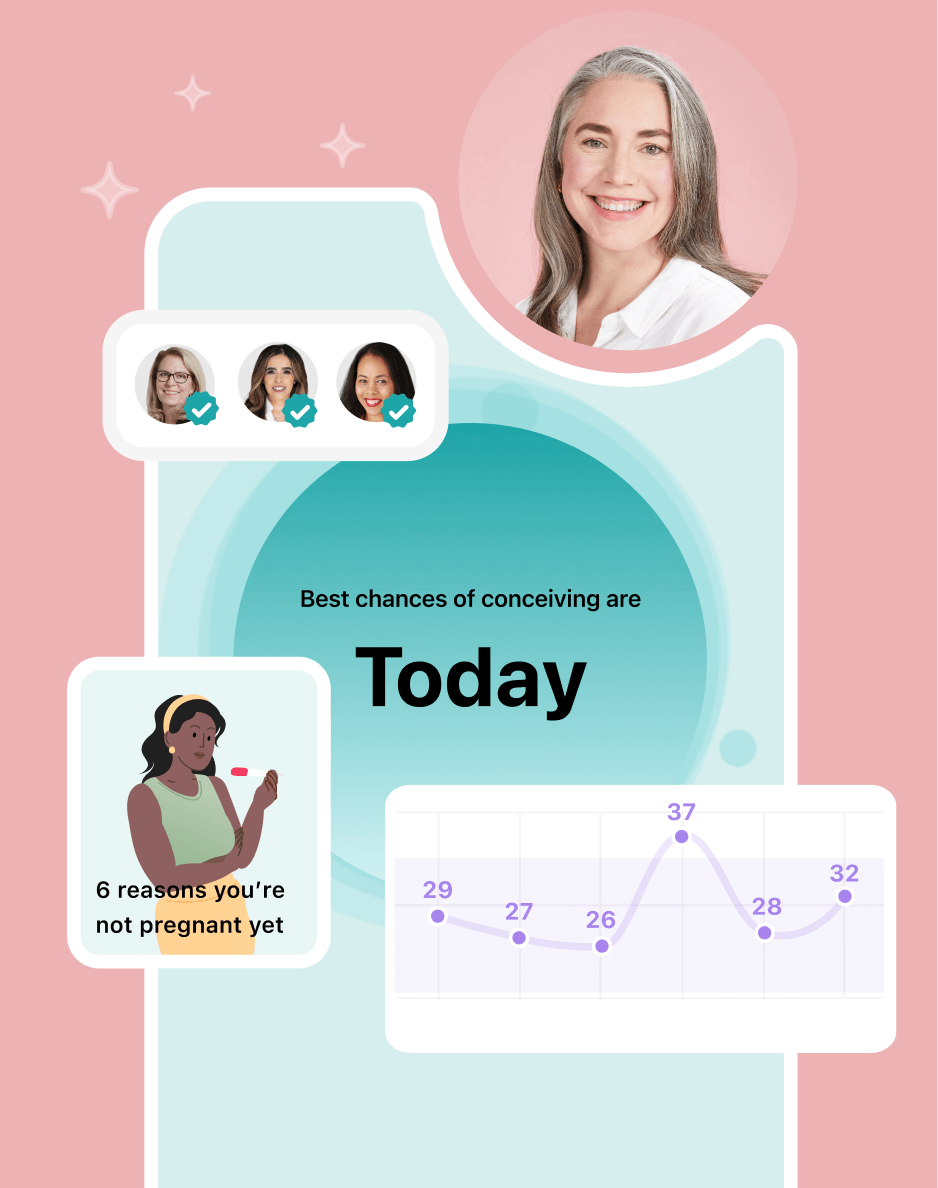
Hey, I'm Anique
I started using Flo app to track my period and ovulation because we wanted to have a baby.
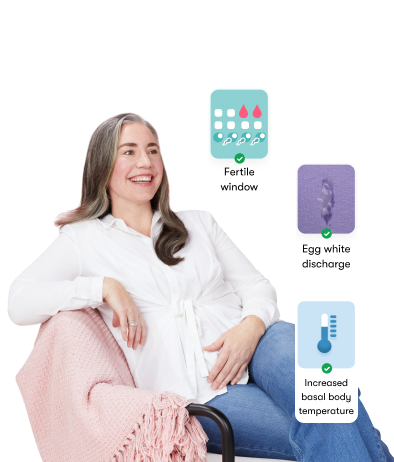
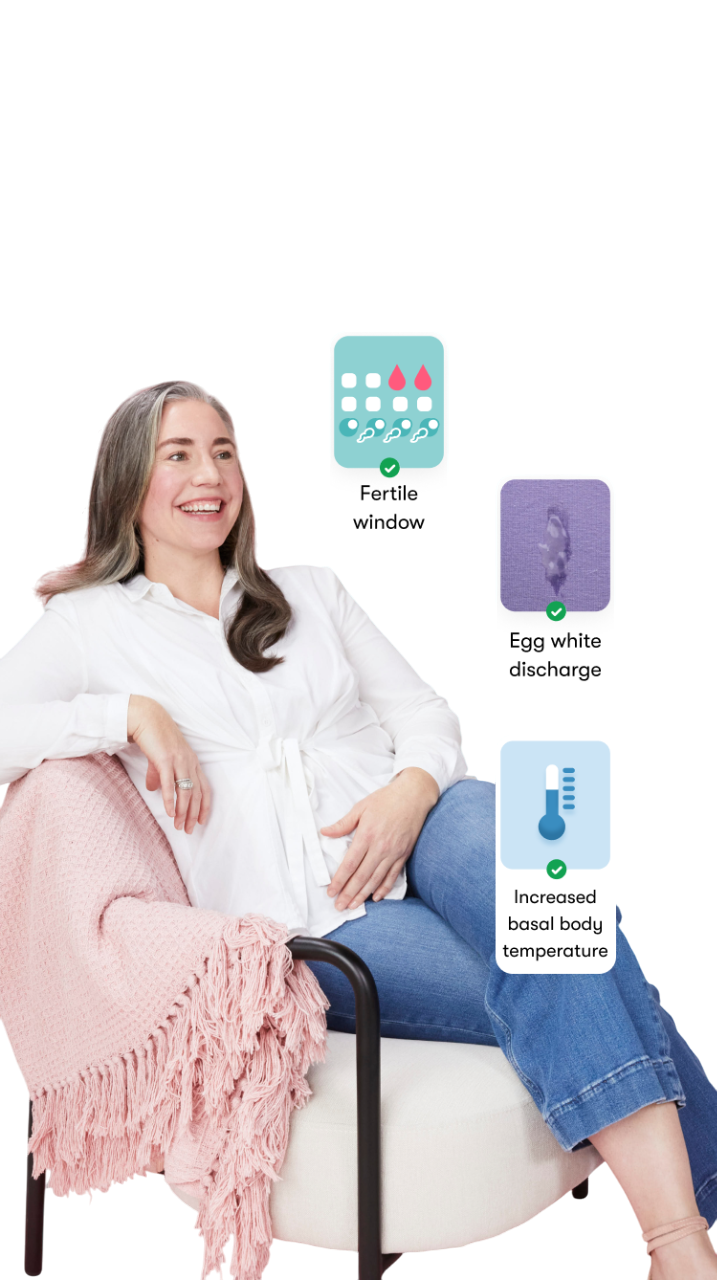
The Flo app helped me learn about my body and spot ovulation signs during our conception journey.
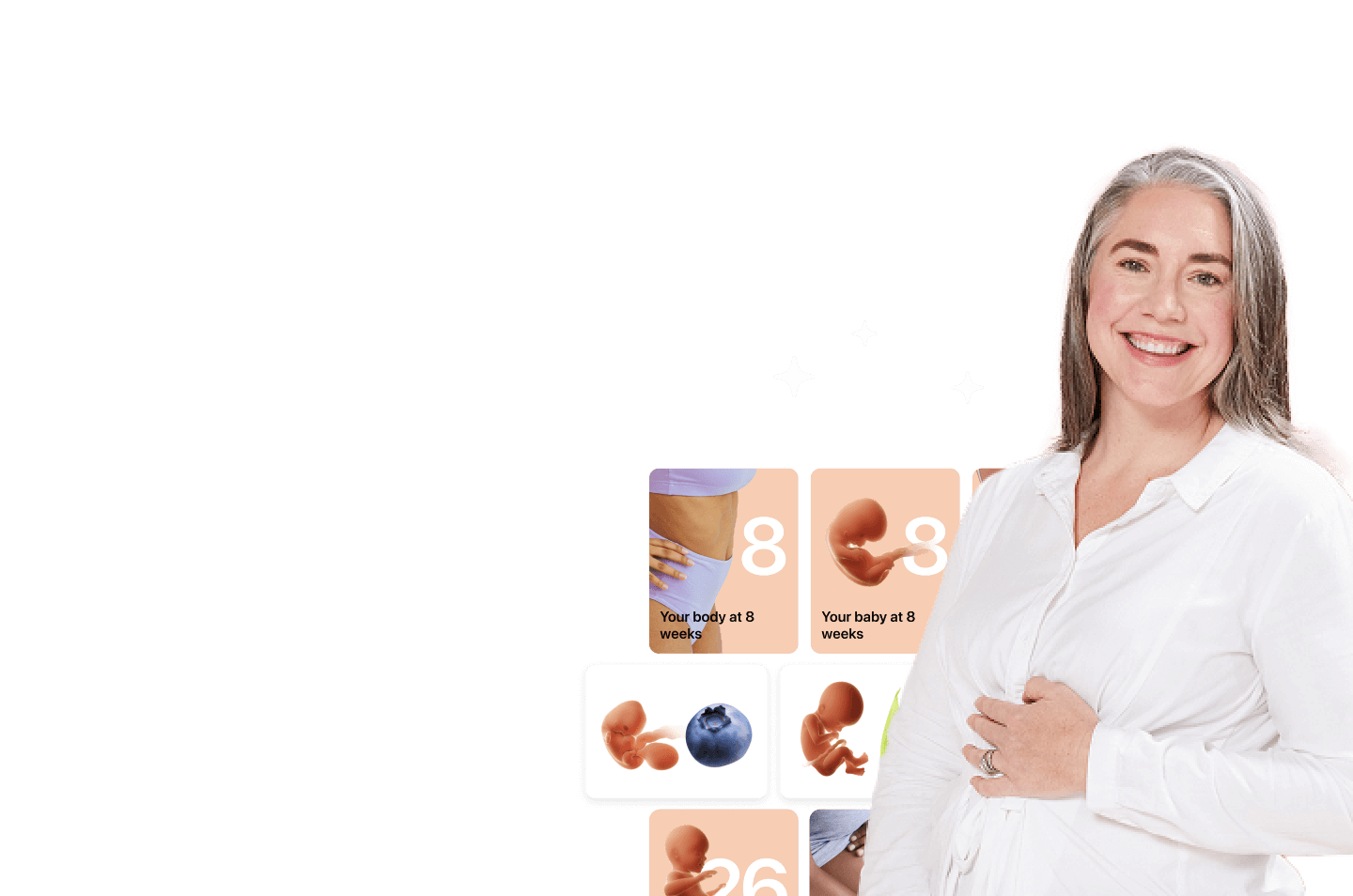
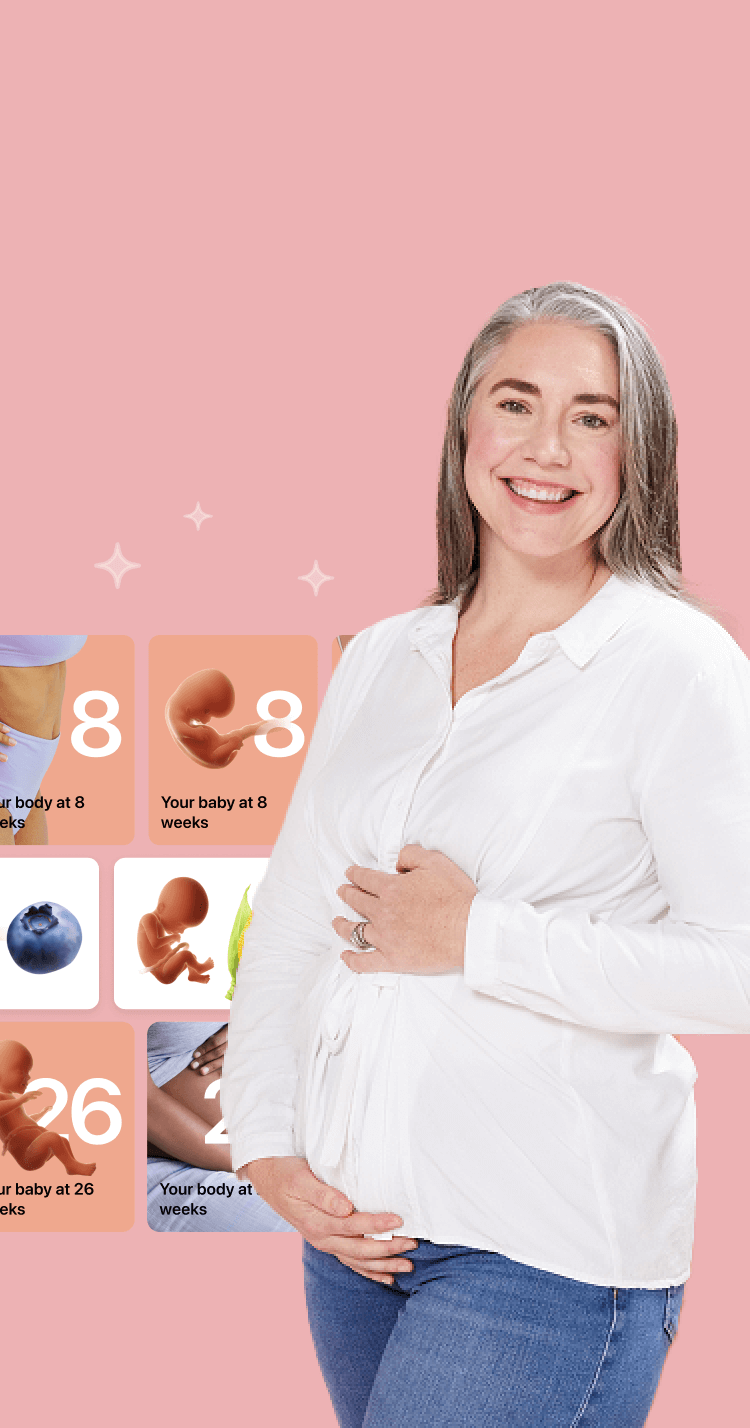
I vividly
remember the day
that we switched
Flo into
Pregnancy Mode — it was
such a special
moment.
Real stories, real results
Learn how the Flo app became an amazing cheerleader for us on our conception journey.
References
“Advanced Maternal Age.” Cleveland Clinic, my.clevelandclinic.org/health/diseases/22438-advanced-maternal-age. Accessed 12 Mar. 2025.
“Advanced Maternal Age.” Johns Hopkins Medicine, www.hopkinsmedicine.org/health/conditions-and-diseases/advanced-maternal-age. Accessed 13 Mar. 2025.
Age and Fertility: A Guide for Patients. American Society for Reproductive Medicine, 2012, www.reproductivefacts.org/news-and-publications/fact-sheets-and-infographics/age-and-fertility-booklet.
“Amniocentesis.” Mayo Clinic, 7 Oct. 2022, www.mayoclinic.org/tests-procedures/amniocentesis/about/pac-20392914.
“Aneuploidy.” Cleveland Clinic, my.clevelandclinic.org/health/diseases/24060-aneuploidy. Accessed 11 Mar. 2025.
Attali, Emmanuel, and Yariv Yogev. “The Impact of Advanced Maternal Age on Pregnancy Outcome.” Best Practice and Research Clinical Obstetrics and Gynaecology, vol. 70, Jan. 2021, pp. 2–9, https://doi.org/10.1016/j.bpobgyn.2020.06.006
Basta, Marina, et al. “Impact of Hypertensive Disorders of Pregnancy on Stillbirth and Other Perinatal Outcomes: A Multi-Center Retrospective Study.” Cureus, vol. 14, no. 3, Mar. 2022, https://doi.org/10.7759/cureus.22788.
Bluvas, Erin. “New Study Examines Pros, Cons of Advanced Maternal Age.” University of South Carolina Arnold School of Public Health, 15 Sep. 2023, www.sc.edu/study/colleges_schools/public_health/about/news/2023/nsf_grant_mann.php.
“Chorionic Villus Sampling for Prenatal Diagnosis.” Cleveland Clinic, my.clevelandclinic.org/health/diagnostics/4028-chorionic-villus-sampling-for-prenatal-diagnosis. Accessed 11 Mar. 2025.
“C-Section.” Mayo Clinic, 16 June 2022, www.mayoclinic.org/tests-procedures/c-section/about/pac-20393655.
“Current ACOG Guidance.” The American College of Obstetricians and Gynecologists, www.acog.org/advocacy/policy-priorities/non-invasive-prenatal-testing/current-acog-guidance Accessed 11 Mar. 2025
“Data and Statistics on Stillbirth.” Centers for Disease Control and Prevention, 15 May 2024, www.cdc.gov/stillbirth/data-research/index.html
“Down Syndrome (Also Called Trisomy 21).” Minnesota Department of Health, 17 Dec. 2024, www.health.state.mn.us/diseases/cy/downsyndrome.html.
“Down Syndrome.” Cleveland Clinic, my.clevelandclinic.org/health/diseases/17818-down-syndrome. Accessed 11 Mar. 2025.
“Early Pregnancy Loss.” The American College of Obstetricians and Gynecologists, Nov. 2018, www.acog.org/clinical/clinical-guidance/practice-bulletin/articles/2018/11/early-pregnancy-loss.
“Exercise during Pregnancy.” The American College of Obstetricians and Gynecologists, Sep. 2024, www.acog.org/womens-health/faqs/exercise-during-pregnancy.
Faubion, Stephanie. “What You Need to Know about Pregnancy after Age 40.” Mayo Clinic Press, 18 Dec. 2023, https://mcpress.mayoclinic.org/pregnancy/what-you-need-to-know-about-pregnancy-after-age-40/.
“Female Age-Related Fertility Decline.” The American College of Obstetricians and Gynecologists, Mar. 2014, www.acog.org/clinical/clinical-guidance/committee-opinion/articles/2014/03/female-age-related-fertility-decline.
“Female Fertility: Why Lifestyle Choices Count.” Mayo Clinic, 9 Jan. 2024, www.mayoclinic.org/healthy-lifestyle/getting-pregnant/in-depth/female-fertility/art-20045887.
“Fetal Macrosomia.” Mayo Clinic, 3 June 2022, www.mayoclinic.org/diseases-conditions/fetal-macrosomia/symptoms-causes/syc-20372579.
“Folic Acid.” Office on Women’s Health, 19 Dec. 2024, womenshealth.gov/a-z-topics/folic-acid.
“Genetic Disorders.” Cleveland Clinic, my.clevelandclinic.org/health/diseases/21751-genetic-disorders. Accessed 11 Mar. 2025.
“Genetic Testing.” Mayo Clinic, 14 Apr. 2020, www.mayoclinic.org/tests-procedures/genetic-testing/about/pac-20384827
George, Korula, and Mohan S. Kamath. “Fertility and Age.” Journal of Human Reproductive Sciences, vol. 3, no. 3, Sep. 2010, pp. 121–23, https://doi.org/10.4103/0974-1208.74152.
“Gestational Diabetes.” Cleveland Clinic, my.clevelandclinic.org/health/diseases/9012-gestational-diabetes. Accessed 11 Mar. 2025.
“Gestational Diabetes.” Mayo Clinic, 9 Apr. 2022, www.mayoclinic.org/diseases-conditions/gestational-diabetes/diagnosis-treatment/drc-20355345.
“Good Health before Pregnancy: Prepregnancy Care.” The American College of Obstetricians and Gynecologists, Feb. 2020, www.acog.org/womens-health/faqs/good-health-before-pregnancy-prepregnancy-care.
Gross, Rachel E. “Please Don’t Call My Cervix Incompetent.” The Atlantic, 25 Jan. 2023, www.theatlantic.com/health/archive/2023/01/geriatric-pregnancy-old-outdated-medical-terms/672834/.
“Having a Baby after Age 35: How Aging Affects Fertility and Pregnancy.” The American College of Obstetricians and Gynecologists, Feb. 2023, www.acog.org/womens-health/faqs/having-a-baby-after-age-35-how-aging-affects-fertility-and-pregnancy.
“Having Kids Later in Life.” NIH News in Health, July 2022, newsinhealth.nih.gov/2022/07/having-kids-later-life.
“High Blood Pressure and Pregnancy: Know the Facts” Mayo Clinic, 23 July 2022, www.mayoclinic.org/healthy-lifestyle/pregnancy-week-by-week/in-depth/pregnancy/art-20046098.
Kniffka, Maxi S., et al. “Stillbirth Rate Trends across 25 European Countries between 2010 and 2021: The Contribution of Maternal Age and Multiplicity.” European Journal of Public Health, Jan. 2025, https://doi.org/10.1093/eurpub/ckae214.
“Menopause.” Mayo Clinic, 7 Aug. 2024, www.mayoclinic.org/diseases-conditions/menopause/symptoms-causes/syc-20353397.
“Menopause.” World Health Organization, 16 Oct. 2024, www.who.int/news-room/fact-sheets/detail/menopause.
“Miscarriage.” Cleveland Clinic, my.clevelandclinic.org/health/diseases/9688-miscarriage. Accessed 13 Mar. 2025.
“Miscarriage.” Mayo Clinic, 8 Sep. 2023, www.mayoclinic.org/diseases-conditions/pregnancy-loss-miscarriage/symptoms-causes/syc-20354298.
Morse, Anne. “Stable Fertility Rates 1990–2019 Mask Distinct Variations by Age.” United States Census Bureau, 6 Apr. 2022, www.census.gov/library/stories/2022/04/fertility-rates-declined-for-younger-women-increased-for-older-women.html.
“Neural Tube Defects.” Centers for Disease Control and Prevention, 21 Nov. 2024, www.cdc.gov/birth-defects/about/neural-tube-defects.html.
“Neural Tube Defects.” Johns Hopkins Medicine, www.hopkinsmedicine.org/health/conditions-and-diseases/neural-tube-defects. Accessed 13 Mar. 2025
“Nutrition during Pregnancy.” The American College of Obstetricians and Gynecologists, June 2023, www.acog.org/womens-health/faqs/nutrition-during-pregnancy.
“Older Mothers More Likely Than Younger Mothers to Deliver by Cesarean.” National Institutes of Health, 8 Mar. 2007, www.nih.gov/news-events/news-releases/older-mothers-more-likely-younger-mothers-deliver-cesarean.
Osterman, Michelle J. K., et al. “Births: Final Data for 2021.” National Vital Statistics Reports, vol. 72, no. 1, 31 Jan. 2023, pp. 1–53, https://dx.doi.org/10.15620/cdc:122047.
“Perimenopause.” Cleveland Clinic, my.clevelandclinic.org/health/diseases/21608-perimenopause. 13 Mar. 2025.
Prasath, Arun, and Vasantha H. S. Kumar. “Special Issue: Advances in Healthcare for Neonates.” Children, vol. 10, no. 6, June 2023, https://doi.org/10.3390/children10061048.
“Preeclampsia.” Cleveland Clinic, my.clevelandclinic.org/health/diseases/17952-preeclampsia. Accessed 12 Mar. 2025.
“Pregnancy after 35: Healthy Pregnancies, Healthy Babies.” Mayo Clinic, 15 July 2022, www.mayoclinic.org/healthy-lifestyle/getting-pregnant/in-depth/pregnancy/art-20045756.
“Pregnancy at Age 35 Years or Older.” The American College of Obstetricians and Gynecologists, Aug. 2022, www.acog.org/clinical/clinical-guidance/obstetric-care-consensus/articles/2022/08/pregnancy-at-age-35-years-or-older.
“Prenatal Genetic Screening Tests.” The American College of Obstetricians and Gynecologists, Oct. 2020, www.acog.org/womens-health/faqs/prenatal-genetic-screening-tests.
“Prenatal Vitamins.” Cleveland Clinic, my.clevelandclinic.org/health/drugs/9754-pregnancy-prenatal-vitamins. Accessed 13 Mar. 2025.
Preterm Labor and Birth. The American College of Obstetricians and Gynecologists, Apr. 2023, www.acog.org/womens-health/faqs/preterm-labor-and-birth.
“Screening Tests in Pregnancy.” NHS, www.nhs.uk/pregnancy/your-pregnancy-care/screening-tests/. Accessed 13 Mar. 2025.
Tong, Stephen, et al. “Miscarriage Risk for Asymptomatic Women after a Normal First-Trimester Prenatal Visit.” Obstetrics and Gynecology, vol. 111, no. 3, Mar. 2008, pp. 710–14, https://doi.org/10.1097/aog.0b013e318163747c.
Witt, Barry. “Trying to Get Pregnant? Here’s When to Have Sex.” The American College of Obstetricians and Gynecologists, Aug. 2023, www.acog.org/womens-health/experts-and-stories/the-latest/trying-to-get-pregnant-heres-when-to-have-sex.



